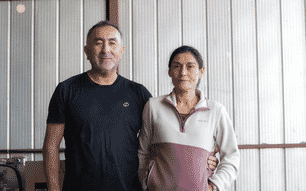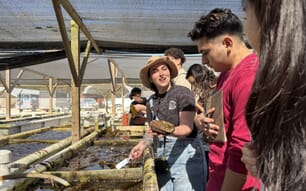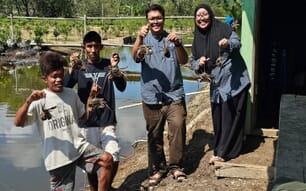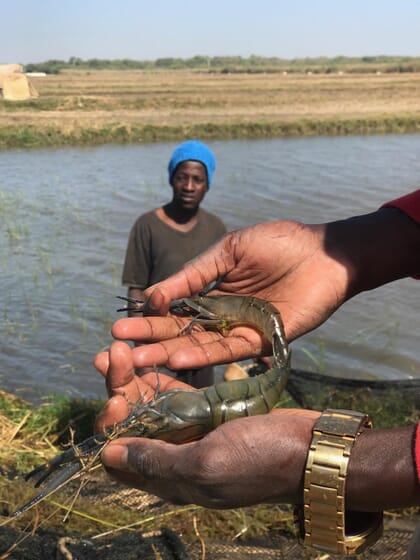
© Susanne Sokolow
Schistosomiasis (schisto, for short) is a widespread parasitic disease. Over 200 million people are infected by it globally and the vast majority of these people live in sub-Saharan Africa. It has long been recognised that new cases of the disease often surge following the construction of dams.
Schistosomiasis depends on both humans and water snails for key parts of its lifecycle – its larvae multiply within snails, before finding and penetrating the skin of human hosts. And the increase in the incidence and severity of the disease in the area around St Louis, Senegal appears to be linked to the proliferation of snails in river systems after dams have been created – which in turn has been linked to the dams acting as a barrier to migratory freshwater prawns, which had previously helped to keep the snail population in check.
“After the Diama Dam was completed in 1986, the people living around the dam experienced the world’s largest recorded outbreak of intestinal schistosomiasis. Even decades later, in some villages upstream of the dam, almost all of the kids may be infected,” explains Chelsea Wood, one of the key researchers involved in the project.
“The eggs produced by these worms end up dispersed throughout the body. The immune system then encapsulates the eggs in non-functioning, bony tissue. In severe cases, infected peoples’ bladders will show up on x-rays! As you can imagine, their organ function diminishes, they suffer from chronic abdominal pain and distension of the abdomen, and it can ultimately culminate in cancer,” she adds.
While there is medication available for treating those infected by the parasites, the treatment is not a vaccine, so any treated patient can be immediately re-infected.
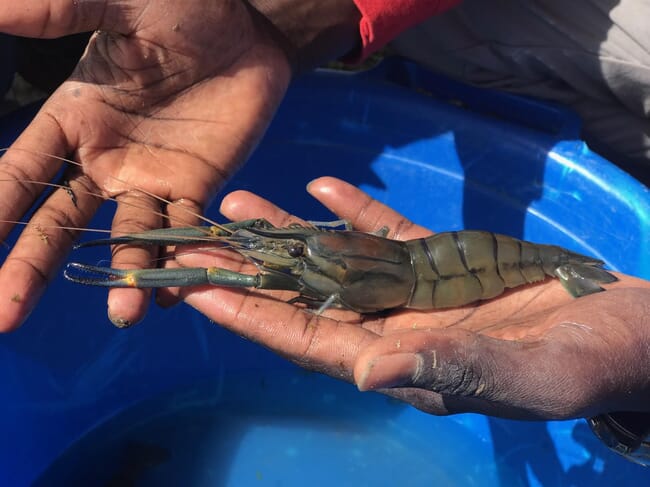
© Susanne Sokolow
The evolution of prawn protection
The possibility of using crustaceans as a form of biological control against schisto was first proposed by Arman Kuris, an academic at UC Santa Barbara. He noticed that non-native Louisiana crayfish (Procambarus clarkii) were having an impact on the snails that spread schisto.
“From experiments in East Africa in the late 80s and early 90s he knew how much crayfish like snails – and he compared schisto infection rates in kids who had crayfish in their local ponds with those who didn’t. Through this trial he was able to demonstrate how an increase of crayfish numbers might decrease the numbers of snails in the ponds and also rates of schisto infection in humans,” Wood explains.
However, given that these North American crayfish are non-native and have the possibility to become invasive if introduced to Africa, the idea was put on ice.
“There was very strong pushback from American conservationists, so the project was shelved, until the researchers decided to try using a native species of river prawn instead,” Wood recalls.
The researchers decided to set up a hatchery to produce native Macrobrachium vollenhoveni prawns, which could then be released at enclosed aquaculture cages in the Senegal River above the dam and start making inroads into to burgeoning snail population. The prawns go into aquaculture enclosures that surround existing water-access points. In theory, as long as humans bathe only in these enclosures, they are protected against re-infection because prawns inside the cage mow down any snails that might also be there. In the long run, should the restocking programme be sufficiently successful, the prawns could also potentially provide a source of food and income for the local population – who had fished for them prior to the construction of the dam.
While Stanford University led the health study design and ecology, funded by the BMGF, the Senegalese Biomedical Research Center (EPLS) led the local prawn reproduction research, funded by GC Canada. Wood, who had trained as a parasite ecologist and undertook a PhD on parasites in finfish in coral reefs, became was keen to sign up as soon as she heard about the project.
“It allowed me to take all the esoteric stuff I’d learned about parasites on coral reefs and apply to it to a system where the consequences are life and death – where we really have a chance to make the world better,” she reflects.
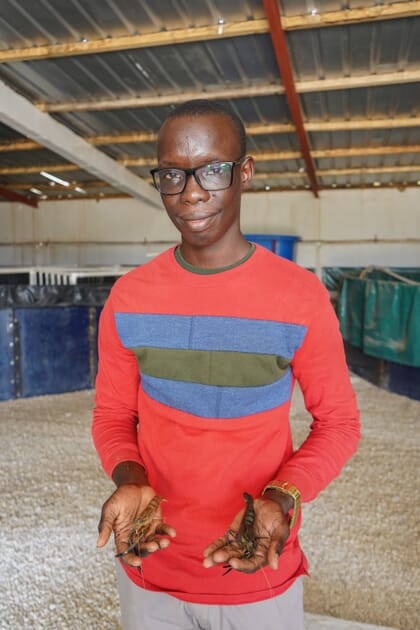
© Hilary Duff, Planetary Health Alliance
A steep learning curve
While the thinking behind the project is hard to argue with, the reality of breeding Macrobrachium has proved more of a challenge than anticipated. However, with help from Macrobrachium expertise from Ben Gurion University and Kentucky State University, the researchers have managed to produce enough prawns to work with – keeping those they restock inside netted-off sections.
“The Macrobrachium have proved tough to culture, but the team has produced enough to stock a number of different sites. This allows us to compare the number of snails and amount of re-infection in people in the presence and absence of prawns,” says Wood.
Challenges have included the difficulty of farming the prawns at the densities they were aiming for; the fact that the cages can get clogged up with aquatic vegetation; and the difficulty of maintaining the cages – as the nets are easily damaged, thereby increasing the likelihood of the prawns escaping.

© Nicolas Jouanard, Station d'Innovation Aquacole
Despite these setbacks the researchers were able to obtain useful data. And analysis of the results is now being undertaken by a PhD student, Kaitlyn Mitchell, who is looking into schisto re-infection rates in the people who participated in the study, taking into account variables such as the person’s sex, the size of the village they come from and other factors.
While it might take a while for the results to be analysed, the researchers have had plenty of positive feedback about the idea.
“The locals have a good awareness of schisto but most of them only have one place to get their water, so they’re super-excited about the project. We’ve definitely been getting good buy-in from the villagers,” says Wood.
While it’s still too early to measure the success of the pilot project, looking ahead, the team is also thinking of other places to deploy the Macrobrachium, should the project prove successful.
“We’re hoping that we can export the model if it proves effective here. If it works, other regions could benefit. It should work anywhere you have schisto, a dam and a native river prawn – we estimate that there are currently 400 million people living in areas where these three factors overlap,” says Wood.


